Unusual interior decor: how to hide heating pipes using different materials?
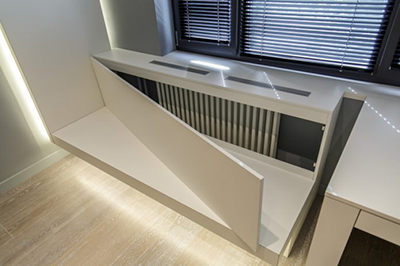
Most of the owners of apartments and private houses use water heatingThis method has many advantages: durability, reliability, warmth.
But the main disadvantage is considered to be unaesthetic.
In addition, it is not possible to install pipes in every apartment, or more precisely, not near every wall, since In case of an accident the wall will need to be broken down, so this point needs to be calculated during installation.
To eliminate the shortcomings there is several ways. They start thinking about this during the construction process so that difficulties do not arise in the future.
How to hide heating pipes in an apartment: legality of actions
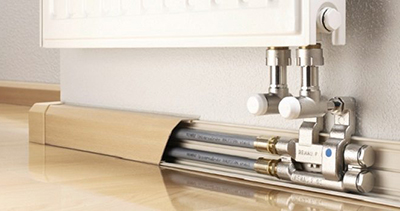
Capital camouflage heating pipes into the room through concealment in the floor or wall forbidden. The law stipulates that permission must be obtained to redesign utility lines.
For this a remodeling project is ordered, agreed with the operating organization.
The chances of obtaining such permission are practically negligible, and it is impossible to change common property without permission, since the punishment may be the confiscation of housing. This is indicated by Art. 29 of the Housing Code. Therefore, there are legal aesthetic methods of camouflage.
How can I cover the radiators on the wall and hide them in the floor?
To hide the pipeline in the apartment, it is recommended to choose any available method, than to embed it in a room partition or in the floor, since absolute accessibility is necessary in case of breakdown.
The possibility of such a process depends on the metal. It is permitted to lay stainless steel and copper risers, metal-plastic with press connections, cross-linked polyethylene. Polypropylene, metal-plastic with compression fittings are not laid in the wall.
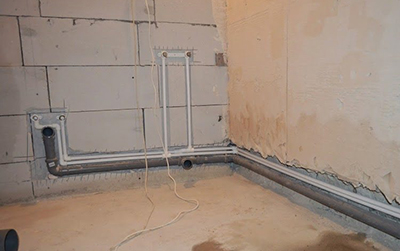
To hide a pipe in any living room, a pipe is installed in the room partition. grooves of the required width and depth.
A heat-insulated riser is placed and finishing is carried out.
Only the flat part is walled into the wall pipes that do not have joints, because, according to technical requirements, accessibility is ensured to:
- counter;
- tap, blocking the flow;
- flange, threaded connection;
- pump;
- expansion tank and other systems.
Before closing the heating riser in the room in the wall or floor, a special casing is put on, to reduce heat loss and to conduct system testing.
Attention! A heating pipe layout diagram is required. This will be required to ensure that future possible repairs do not destroy integrity of the hidden highway.
How to disguise with plasterboard?
The most common method of how to hide a heating battery. In a living space, near horizontal or vertical risers, a frame is constructed from a galvanized profile or wood, covered with plasterboard. Options for using materials: box or false walls.
When laying heating, the pipe is hidden in any room using a box, which made of plastic, wood, plasterboard, and they fasten it on the frame. Before closing the heating pipe using such a design, the dimensions are calculated. The parameter depends on how many pipes there are in the house, what diameter and distance.
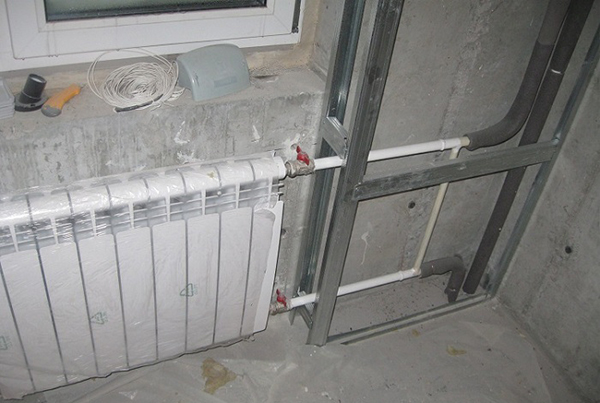
Photo 1. A frame made of metal profile, attached to the wall with screws, and covered with plasterboard.
Gaps are provided up to three centimeters between the wall of the box and the riser, due to the volumetric and linear expansion of the pipe.
Masking algorithm:
- The frame is being made using a wooden block or a metal profile, it is attached to the wall with self-tapping screws.
- Markings are applied to the floor, wall, and ceiling.
- Installation work is being carried out on the rack profile in the wall, the guides are fixed to the ceiling and floor by installing the corner profile.
- The frame is being clad. At the first stage, the side element is fixed, then the central one. And then the decoration continues at your discretion.
Important! At the distance of the racks over 25 cm, an additional parallel crossbar is used. A horizontal crossbar is required at the height of the rack over 150 cm.
Advantages of using plasterboard:
- Economy in work due to the availability of the material.
- Absolute accessibility to the wall.
- Easy dismantling of plasterboard structures, if there is such a need.
Decor in the kitchen and room: photo
An acceptable method for some owners is regular painting pipes if it is a kitchen. This type of camouflage is characterized by resistance to moisture, resistance to sudden temperature changes, and safety for human health.
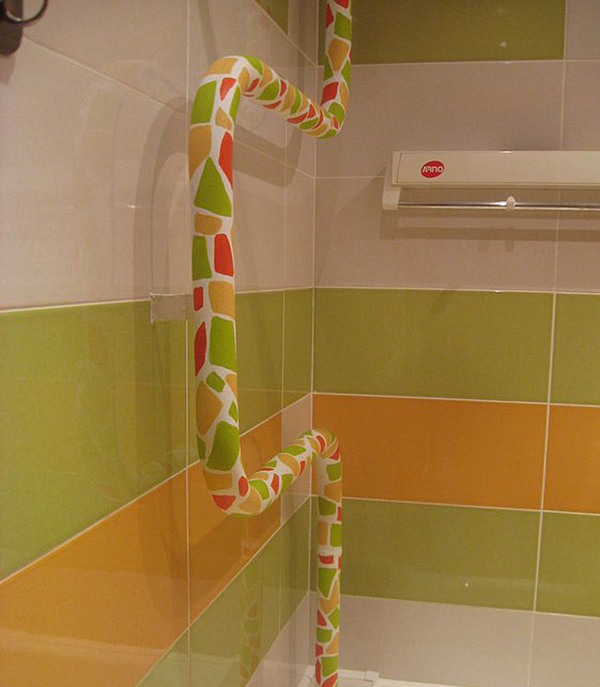
Photo 2. Painted pipe in the bathroom in the same color scheme as the tiles.
Otherwise, The pipes are painted. Paint is applied on a cold circuit, since heat promotes rapid drying and cracking.
A profitable option for closing pipes in the kitchen or toilet is screen application. A similar thing is being made made of wood, MDF sheets, metals, is quite diverse in shades and shapes.
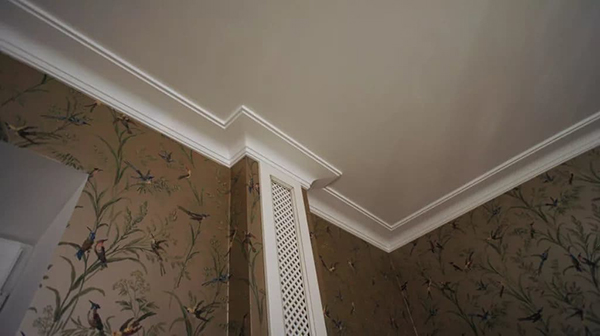
Photo 3. The pipe in the room on the wall is disguised under a perforated white screen.
Installation work does not require much effort, you will only need to secure it in some places, then no one will notice the heating pipes.
With the right selection of this element, there will be better heat transfer. A perforated screen is recommended, providing air circulation in the room. And also used stained glass screens with backlighting, which is convenient.
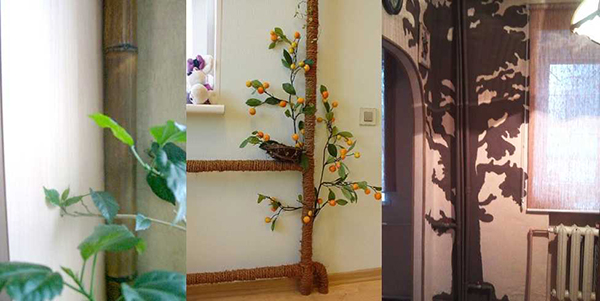
Photo 4. Three different options for decorating heating pipes using ropes and bamboo.
Sockets
A socket for a heating pipe is used for the purpose of decorating a passage in the floor or ceiling. This element is especially relevant when laying laminate or parquet in a room, when it is necessary to hide the connection to heating pipes.
Most often, such areas form unsightly uneven neckline, affecting the aesthetics. They will not be even, since there will be a need for small gaps in case of narrowing or widening of the coatings. Then a socket is used to bypass pipes, masking almost any flaw.
Features of battery masking
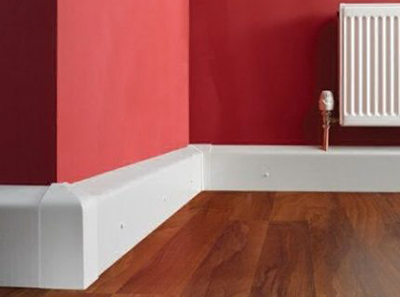
The masking method for heating systems is selected taking into account the characteristics of the pipe itself.
For example, if there is copper pipes, various methods of masking are possible, since this metal is one of the few that is not susceptible to strong temperature changes.
Riser made of metal-plastic not so durable, and in the process of careful insulation and masking it will be difficult to eliminate the leak.
Various types of installation are carried out: vertical, horizontal, with crossbars etc.
Reference! There are cases when, in order to disguise heating pipes, protective screens that cover the entire wall.
Useful video
The video shows one of the ways to mask heating pipes using plasterboard.
Conclusion
Each of the proposed methods is legal. In case of an accident, there is full access to the pipeline, and decorative elements are easily removed. You can hide risers in any type of premises: in apartments or country houses. If you do not have enough knowledge to choose the best way to hide the pipe, what material should the masking objects be made of - it is recommended consult a specialist.






